Keep Exploring!
When you make a purchase from Seed Savers Exchange, you help fulfill our nonprofit mission to protect our food and garden heritage. Do even more good by making a donation to help us preserve and share even more heirloom varieties!
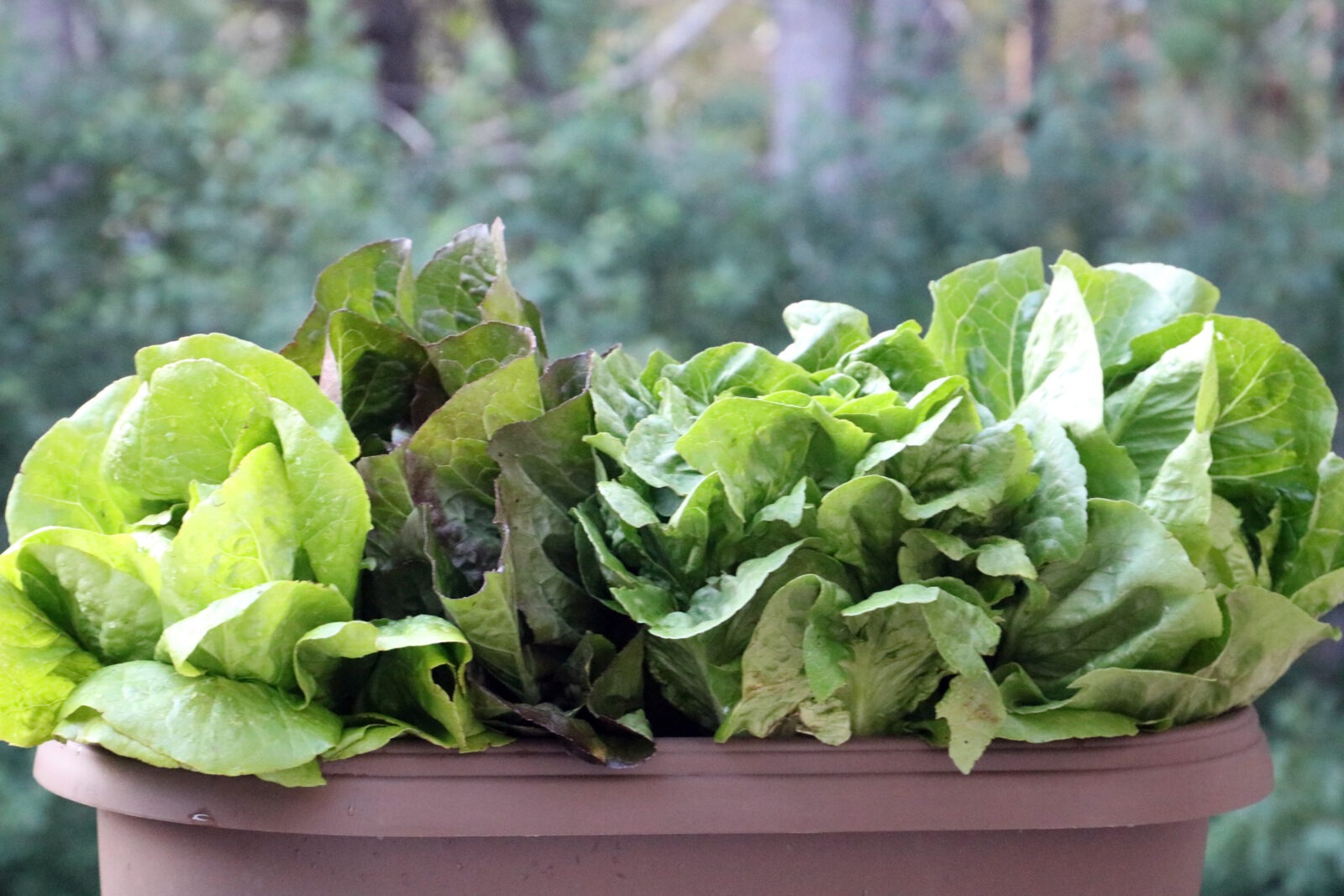
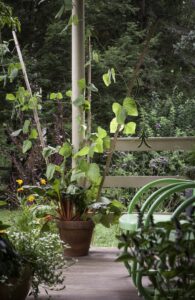
What can you plant in a container? The better question might be, what can’t you? Vegetables, flowers, herbs—almost any plant can thrive in a container as long as it has the proper soil and care. Whether you lack enough land, live in an urban area, or just don’t have the time or energy to tend an outdoor plot, container gardening provides a viable alternative for you to grow your own food and a beautiful garden.
Keep reading to learn how to grow vegetables in containers!
Containers come in all shapes, sizes, colors, and composition, from sturdy terra-cotta cauldrons and eye-catching ceramic pots to half-barrels crafted from wood. Select the style that suits you best, but make sure the container has at least one hole in the bottom to ensure proper drainage.
Also pay attention to your priorities when you’re considering container size—large containers allow you to grow a greater variety of plants, while smaller ones promote portability.
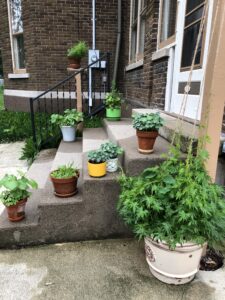
Plants in containers need soil that allows roots to grow easily—it should be fast-draining yet moisture-retentive. Quick drainage helps ensure plant roots won’t rot in too-soggy soil, while good moisture retention decreases the amount of time you’ll spend watering in the first place. Organic potting soil mixed with a healthy amount of compost is ideal; the compost will add nutrients your plants need to flourish.
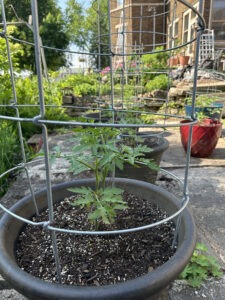
Striking the right balance between moisture and drainage is key for plants in pots. Because they have a fixed amount of soil from which to draw moisture, container-grown plants require more frequent watering than those grown in the ground.
But over-watering can also pose a danger to potted plants. What’s a good rule of thumb for assessing if your plants are thirsty?
If the top inch or two of soil feels dry, give them a drink. (Remember, plants in indirect light or shade retain water longer than plants located in full sun.)
Just like plants in the ground, plants in containers need sunlight in order to thrive. Unlike plants in the ground, it’s easier to address those sunlight needs because potted plants are portable. If your plants aren’t getting adequate light, just move them to an area that offers them the sun they need.

Container gardens aren’t all about growing your own food, though that’s certainly a big benefit. Placed strategically, plants can add visual pizzazz to a patio, porch, deck, or even an indoor spot (sunlight permitting). Mix plant colors, textures, and heights to achieve optimal beauty in your pots—just make sure your containers are big enough to hold what you’re planting.
You can grow a lot more crops in containers than you might think! Plants that have shallow roots and don’t take up much space are well-suited for containers:
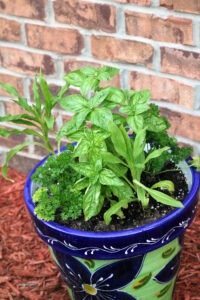
It is possible to grow almost any crop in a container. That being said, there are some crop types that prefer to be grown in the ground. These crops either need a lot of space to grow, or they have a long taproot.
Seed Savers Exchange offers varieties of some of these crops that are smaller and well-suited for container gardening.
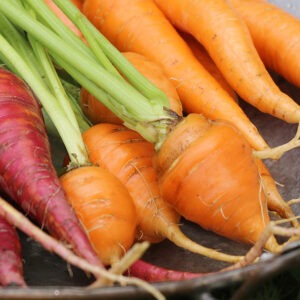
Nineteenth-century French variety. Early round red-orange carrots, 1-2″ in diameter, uniform and very sweet. Does well in shallow or rocky soil. Can also be grown in containers. Highly sought after by gourmet restaurants and a great seller at markets.
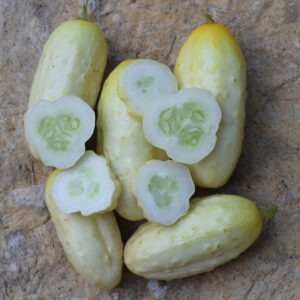
Popular yellow-white miniature eating cucumber. Best eaten when fruits are less than 3″ long. Mild sweet flavor, no need to peel. Productive vines rarely exceed 3′ in length; suitable for container gardening.
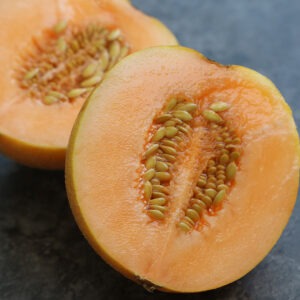
Extra-early variety bred by the University of Minnesota at St. Paul in 1948; introduced by Farmer Seed and Nursery Company. Capable of producing two crops—an excellent choice for northern gardeners. Vines seldom over 3′ long; suitable for growing in containers. Round 4″ fruits have thick golden-yellow flesh that is edible to the rind and deliciously sweet. Resistant to fusarium wilt.
Interested in starting (or perhaps expanding) your container garden? Try these open-pollinated varieties from Seed Savers Exchange that do well (and look great) in pots. And don’t miss our Container Garden Seed Collection—a curated selection of varieties, perfect for container gardening, all in one package!
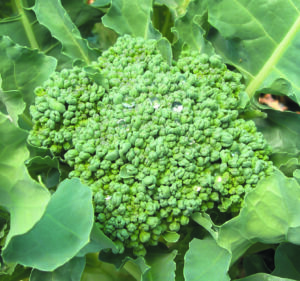
An Italian broccoli introduced to the United States in 1890. Compact 2-3 foot plants produce a 4 inch central head. After the central head is harvested, a second yield of edible side shoots will develop. It is quite variable in its maturity, which creates an extended harvest time—a quality home gardeners may appreciate.

(aka Dinosaur, Nero di Toscana) Italian kale which reportedly dates back to the 18th century. Blue-green strap-like leaves are 3 inches wide by 10-18 inches long with a heavily savoyed texture. Excellent flavor that is enhanced by frost. Best eaten when leaves are small and tender. Kale makes an excellent and eye-catching container crop.
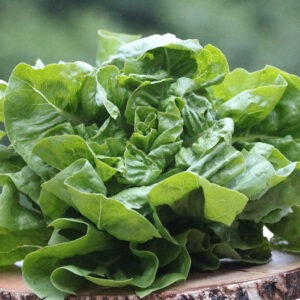
Its mellifluous Hawaiian name may mean “rainbow,” but this lettuce is a beautiful, uniform bright green. A slow grower and bolter, ‘Anuenue’ matures as the days get shorter and the heat gets stronger. This University of Hawaii introduction bears crisp, sweet, succulent leaves and remains compact as it grows, surrounding its round, tightly packed heart with crisp outer leaves. Unlike the seed of most lettuce varieties, its seed will germinate at 80 degrees; this variety also has some cool- season hardiness when protected.
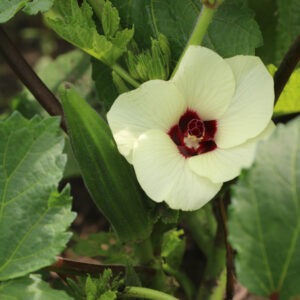
This variety has delighted the Cajun Country since the 1950s! Splineless, compact plants reach 3–4 feet tall and yield an abundance of relatively early 6-8 inch-long pods with great flavor. Introduced by Southern Exposure Seed Exchange in 1989, this versatile gem thrives in hot climates but also adapts well to cooler ones. Its beautiful blooms are a bonus.
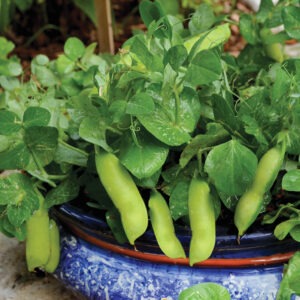
At 8 inches tall, this aptly named dwarf pea is ideal for container gardening and is very frost-tolerant. Originating in England and introduced in the United States in the mid-19th century, there were several strains of this variety; over time, further reductions in height and time to maturity were achieved, leading to the pea we know as Tom Thumb today.
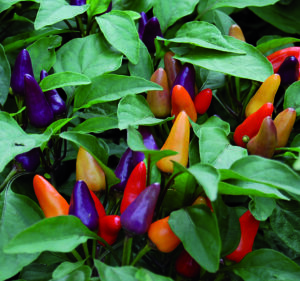
Stunning 1½ inch-long fruits borne on foot-high ornamental plants, perfect for container growing. Fruits ripen from lavender to deep purple to orange and finally to red. Grown as an ornamental, but can be eaten. Medium-hot.
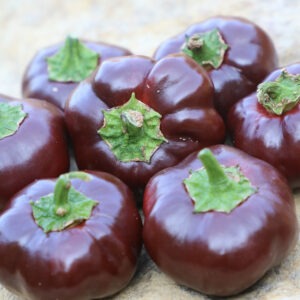
Short stocky plants covered with lovely 2″ long miniature bell peppers with an excellent fresh flavor. This arose in the garden of Ohio Seed Savers Exchange member Lucina Cress during the 1980s in her crop of full-sized Chocolate peppers. She saved seeds from the smallest fruits. Great for salads.
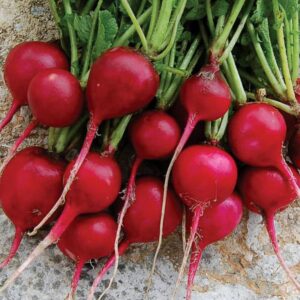
Early forcing radish for home or market gardeners, good for bunching. Roots only grow to one-inch globes with bright red skin and white flesh. A sure cropper. Plant in the spring or fall.
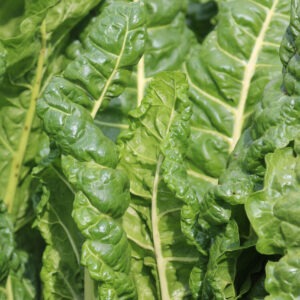
Expect 18-25 leaves per plant from this prolific Swiss chard variety, which grows uniform and erect. The stems, stalks, and leaf rib are all green, as are the leaves, which have a medium thickness, some curling at the margins, and very sparse hairs. Eaten raw or cooked, the leaves taste mild and slightly sweet, not chalky, and have a firm texture. The mature plants reach 10-17″ tall and 20-27″ wide, and the leaves grow 7-10″ long and 4-6“ wide.
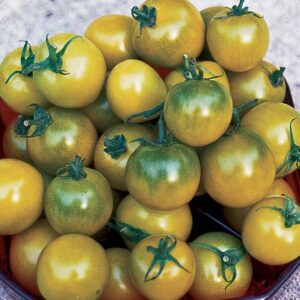
A selection made from Thomas Wagner’s Thompson Seedless Grape. Unique olive yellow 1 inch cherry tomatoes on very productive plants. Addictive spicy sweet flavor. Determinate; fruit ripens over a two-week period.
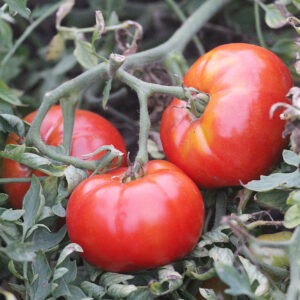
Traditional Russian variety with distinctive carrot-like silvery-gray foliage on compact 24″ plants. Heavy crops of round, slightly flattened 3-3½” red fruits. Unique decorative variety that is a real eye-catcher. Does well in hanging baskets or on patios. Introduced by Seed Savers Exchange in 1995. Determinate; fruit ripens over a period of 2 weeks.
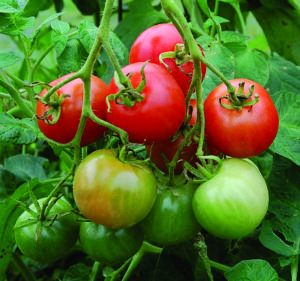
One of four tomato varieties sent to the U.S. from the former Czechoslovakia by Milan Sodomka. Compact plants with potato leaf foliage loaded with clusters of 2″ fruits. Quite early, great flavor. Heavy yields all season. Produces well in northern climates. Indeterminate; fruit ripens throughout the season.
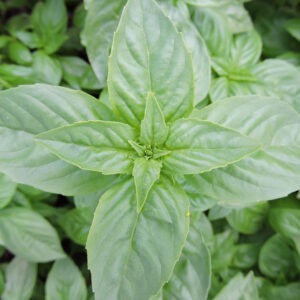
A classic Genovese-type basil, with dense foliage, this herb has a slightly milder anise profile. It comes from the family of Steve Foisie and is named after his grandfather, Agostino Reghitto.
Agostino emigrated from Italy to Washington State in 1902 and founded Colonial Gardens Company, which raised vegetables for the Tacoma and Olympia markets. It’s unknown if the basil came from Italy, but Steve and his sister Sue recall that their mother, Della (Agostino’s daughter), grew it yearly.
The upright plants measure approximately 1′ tall, and the leaves measure about 3-4½” long and about 1-2″ wide.

It is difficult, for gardeners of all ages, to resist touching this flower’s fluffy head, which is as soft as a bunny’s tail! Compact but showy, this annual ornamental grass is easily grown in a border, for use as a cut flower, or in a container. Drought-tolerant once established with a dwarf habit.
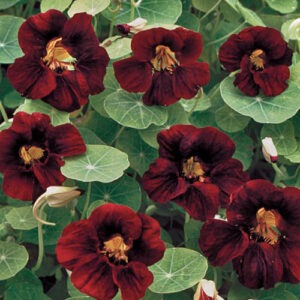
The intense velvety-black blooms of this nasturtium are completely unique within this genus. Growing only 10-12 inches tall, the dwarf plants are ideal for container gardens. The edible blossoms and gray-green leaves dress up spring salads both visually and with a surprising peppery burst or flavor.
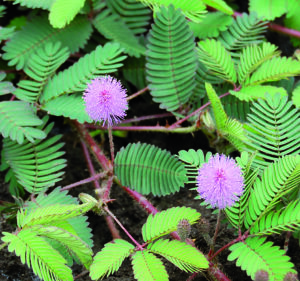
The ornamental pinnate leaves of this Brazilian species close when touched by children (or adults, who also cannot resist them). This pea relative bears lilac-pink spherical flowers which precede the development of its seed pods and does best when watered sparingly and from below. The species is tough and well suited to containers, but one must be careful not to “tickle it to death.”
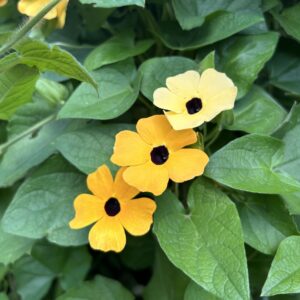
Also known as Clockvine. Native to tropical Africa. Formula mix of colors includes pure white, golden-orange, golden-orange with black centers, pure yellow, and yellow with contrasting black eyes. Great for hanging baskets, containers, or garden trellises. Very easy to start from seed, fast-growing, and quick to bloom.
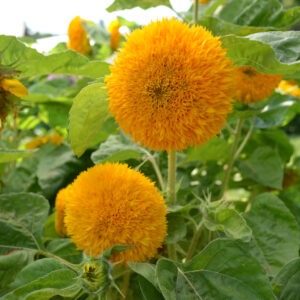
Beautiful double 4-6 inch golden-yellow blooms are great for cut flowers. The plants grow to 18-24 inches tall, great for containers or for an excellent border in front of larger sunflowers. A favorite with children.
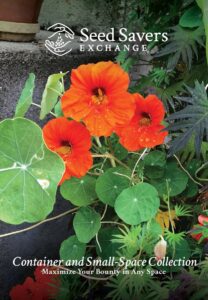
This seed collection makes an excellent gift for your gardening friends—or a great treat for yourself! This collection contains one packet of the following six different small-space varieties:
Keep Exploring!
When you make a purchase from Seed Savers Exchange, you help fulfill our nonprofit mission to protect our food and garden heritage. Do even more good by making a donation to help us preserve and share even more heirloom varieties!